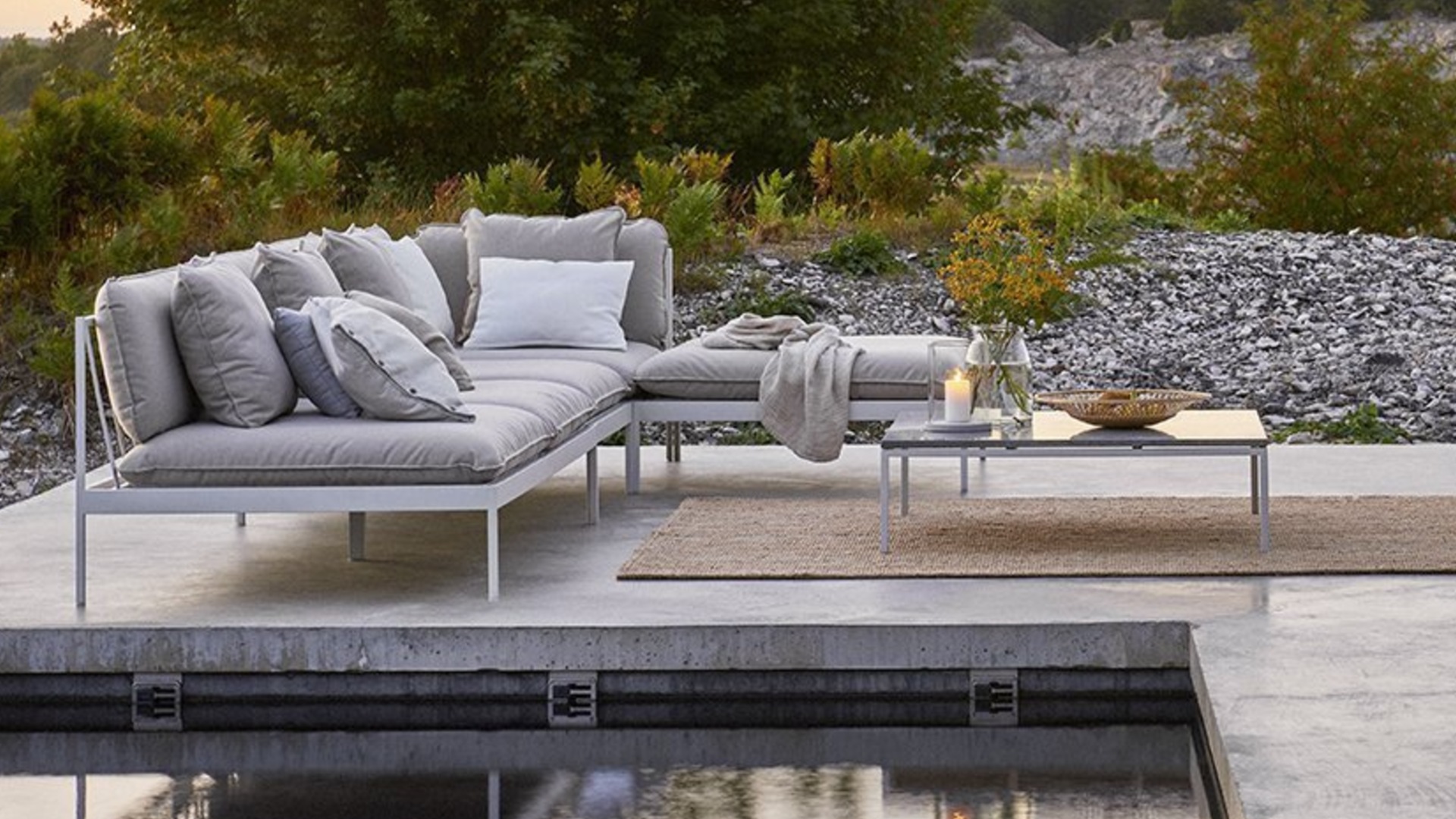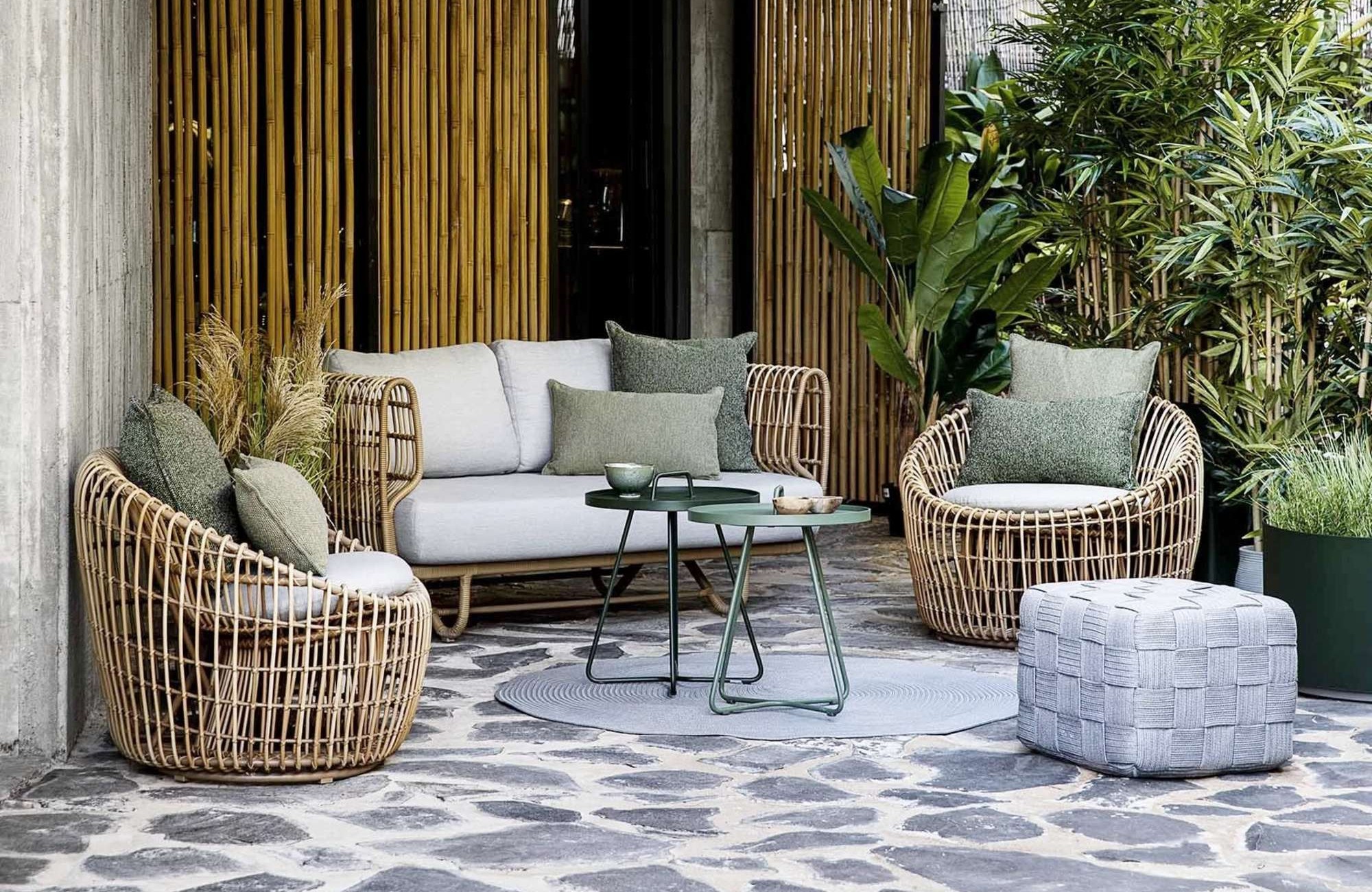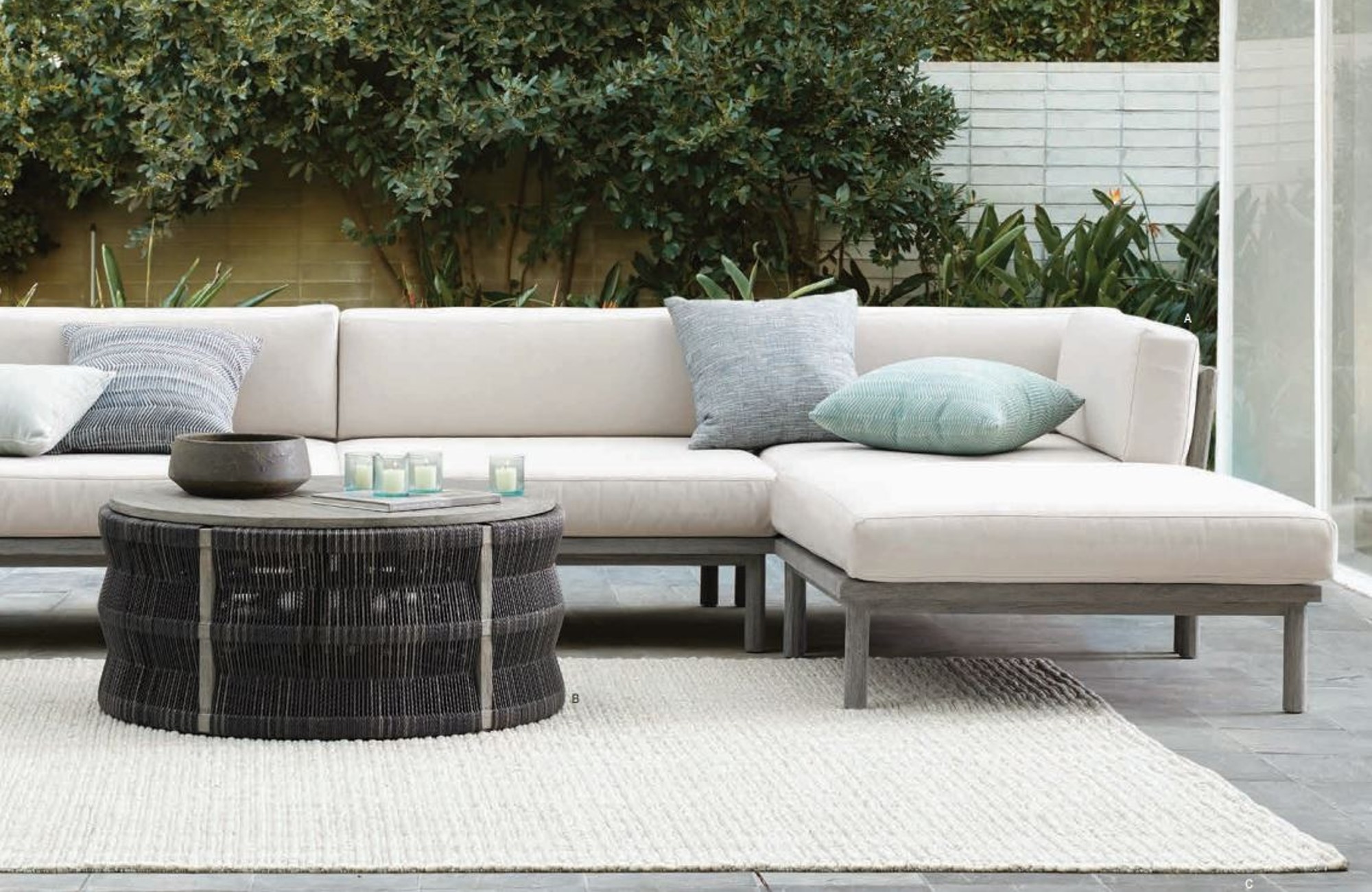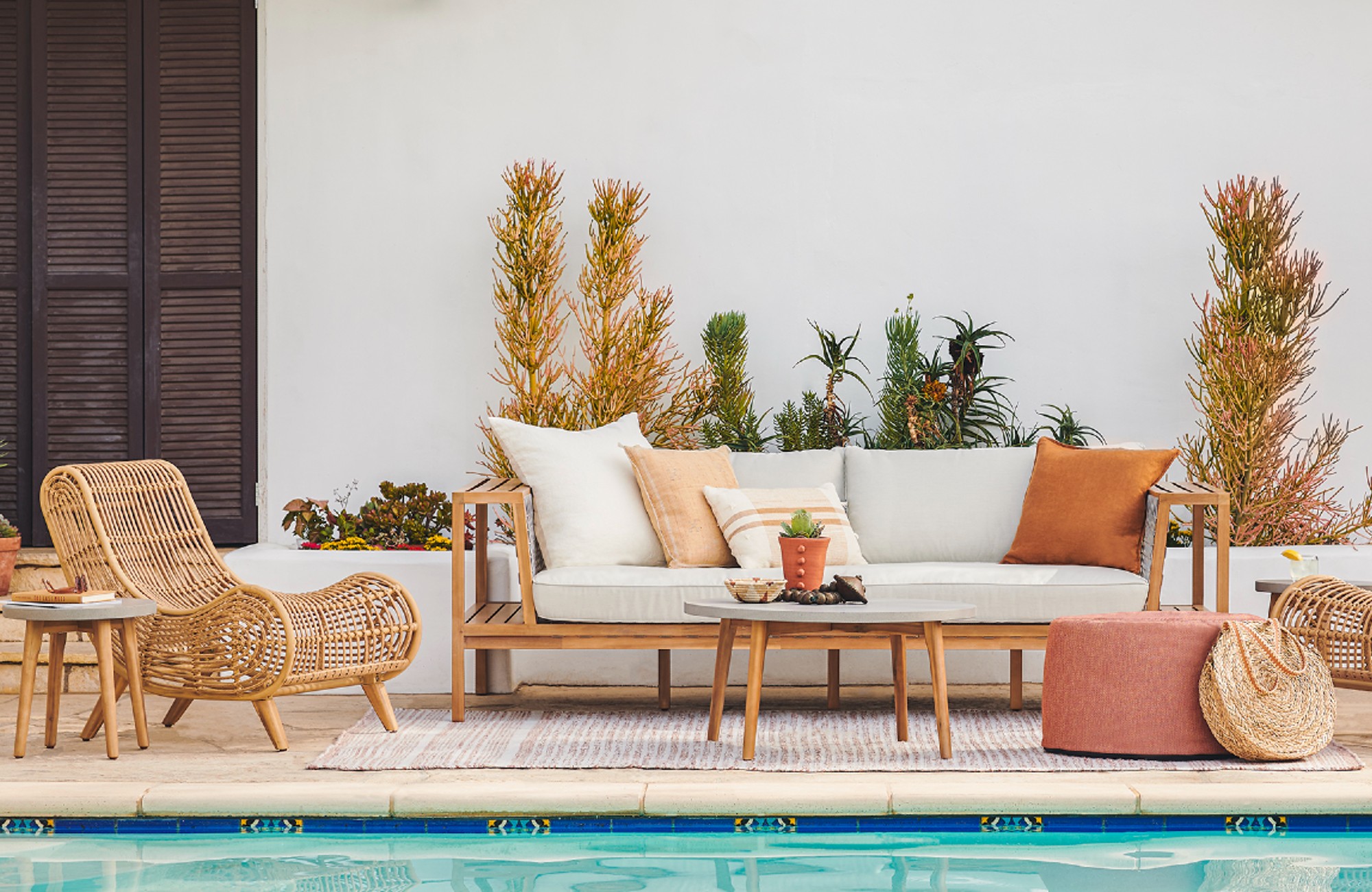How to Winterize Outdoor Furniture — 6 Expert Tips to Prepare Your Backyard for the Frost
It's important to take care of your furniture throughout seasonal changes and here's how you can do just that


As temperatures drop and winter settles in, your outside furniture may suffer if left unprotected. From heavy rain to freezing snow, unwinterized furniture can take a beating, potentially leading to cracking, rust, mold, or discoloration.
Each type of outdoor furniture requires specific care to endure winter’s challenges. To preserve the longevity and aesthetic appeal of your outdoor pieces, it’s crucial to prepare them for the winter season.
To help you prepare your furniture for winter, we’ve gathered six practical tips from industry experts. These steps will ensure your furniture remains in great condition through the colder climate.
1. Clean Thoroughly

Before winterizing any pieces of outdoor furniture, it’s essential to start with a deep clean. Dirt, mildew, and debris left on furniture can lead to stains and deterioration over time, especially when trapped under covers. And that's where knowing how to clean teak outdoor furniture comes in.
Cleaning isn’t just about aesthetics; it also prevents mold and mildew growth during storage. According to home furniture expert Beena Shaikh, “Even the smallest debris can hold moisture, leading to permanent damage. A clean surface ensures the furniture stays pristine over the winter.”
For wood furniture, use a mild soap and water solution, avoiding harsh chemicals that can strip the finish. For metal pieces, a gentle scrub with water and a non-abrasive cloth like this Swedish Dishcloth Cellulose Sponge Cloths from Amazon works well. Cushions should be vacuumed and spot-cleaned according to manufacturer guidelines.
2. Invest in High-Quality Furniture Covers

Durable, waterproof covers such as Costway Patio 3-Seater Outdoor Deep Couch Sofa Cover from Target, are one of the simplest ways to protect outdoor furniture from winter. "Look for covers specifically designed for your type of furniture to ensure a snug fit and proper ventilation," continues Beena. "High-quality covers are made from UV-resistant and breathable materials that prevent condensation, mold and rust."
The Livingetc newsletters are your inside source for what’s shaping interiors now - and what’s next. Discover trend forecasts, smart style ideas, and curated shopping inspiration that brings design to life. Subscribe today and stay ahead of the curve.
Furniture covers act as a shield and stop outdoor furniture from fading, but they need to fit well and be secured properly so that the strong winter winds don’t blow them away. Use bungee cords or ties to anchor covers in place, and regularly check for any tears or pooling water throughout the season.
3. Store Cushions and Fabrics Inside

"Even weather-resistant cushions and fabrics benefit from indoor storage during the colder months," says furniture maker Richard Louise. "Prolonged exposure to freezing temperatures can cause fabrics to become brittle and lose their water-repellent properties. Store cushions in a dry, well-ventilated space such as a garage, basement, or storage bench."
If space is an issue, consider vacuum-sealing cushions using MagicBag Smart Design Instant Space Saver Storage bags from Walmart to save room. Always ensure they’re completely dry before sealing to prevent mildew.
4. Apply Protective Treatments

One way to winterize your backyard and the furniture that it holds is by applying a protective treatment on them — such as a fabric protector. For wooden furniture, a coat of weatherproof sealant or furniture oil such as this Pure Tung Oil for Wood Finishing from Amazon can prevent cracking and warping caused by moisture. For metal pieces, applying a rust-resistant spray such as Rust-Oleum Universal Spray from Target or touch-up paint on any scratches helps guard against corrosion.
These treatments are easy to apply and make a significant difference in extending the life of your outdoor furniture, however be sure to follow the manufacturer’s recommendations for application and drying times as it's more likely to rain during winter.
5. Keep Furniture Off the Ground

If your furniture remains outside during the winter, consider elevating it slightly to protect it from pooling water and snow.
Use bricks, wooden blocks, or specialized furniture risers such as the Slipstick Bed Risers/Furniture Raisers from Walmart, to create a small buffer between the furniture and the ground.
6. Store Lighter Furniture Inside

If possible, store lightweight or easily movable furniture indoors. Outdoor folding chairs and smaller tables can be safely tucked away in a shed or garage. This not only reduces their exposure to winter but also frees up outdoor space.
"Out of sight doesn’t mean out of mind," says Theresa Butler, Principal and Founder of Theresa Butler Interiors. "Check stored furniture periodically for any signs of pests, moisture, or damage to ensure they’re in good condition come spring."
FAQs
Can outdoor furniture be left outside in the winter?
In short, yes you can leave your outdoor furniture outside during winter if you do take the time to cover it up and protect it correctly.
Winterizing outdoor furniture may seem like a daunting task, however a little preparation will save you from costly repairs or replacements in the future. By taking these proactive measures. you will ensure that your outdoor furniture weathers the winter in style.

Seraphina is a contributing editor at Livingetc, writing Advice features on design, renovation and organisation. Seraphina is a qualified Interior Designer from KLC School of Design having worked at London-based interior design agencies Anouska Hempel and ND Studios. Seraphina has also completed her MA degree in Magazine Journalism at City, University of London, with previous experience including writing for Homes & Gardens, Women's Health, Food & Travel and Fabulous Magazine.